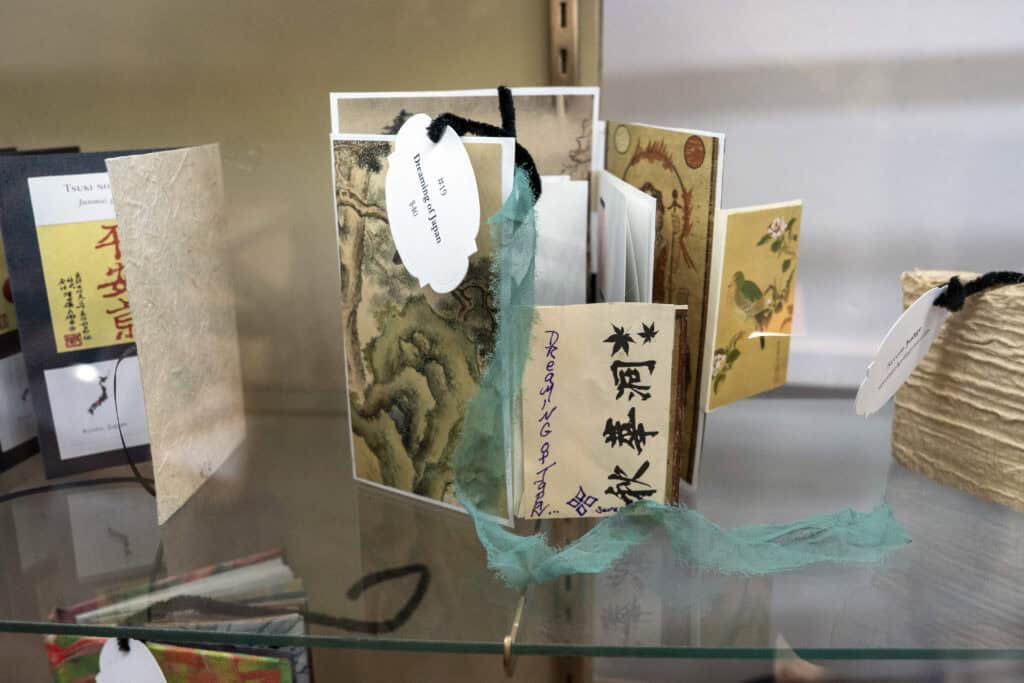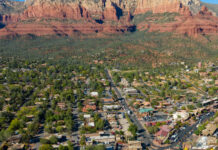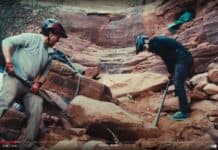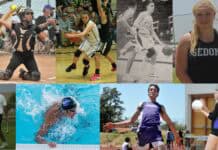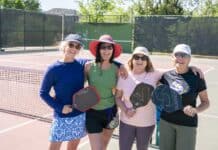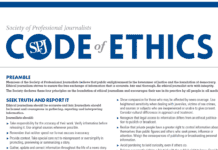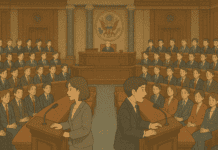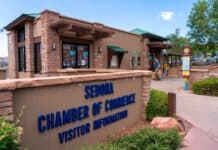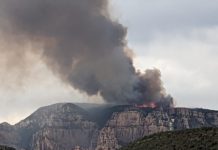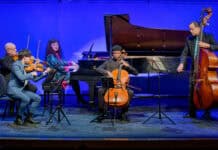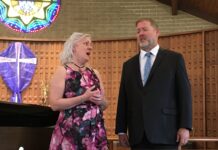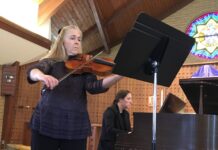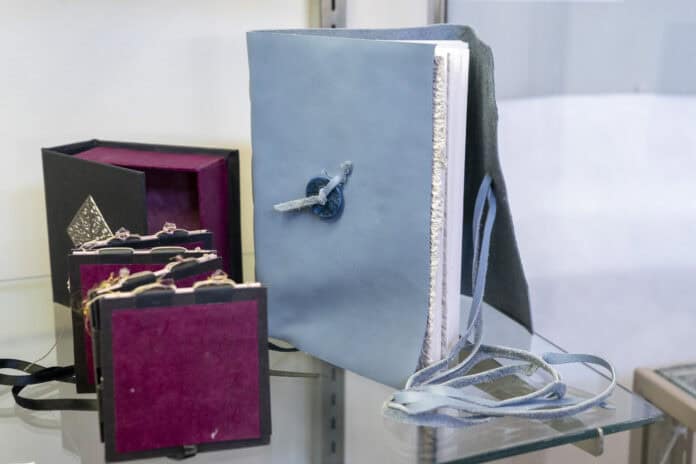
The Community Library Sedona will be hosting a display of art books created by the members of the SeQuence book-making group through Saturday, April 19, with members starting off the exhibit with a demonstration and instructional presentation in the library lobby on Saturday, April 5.
“When you open up a book and you see there’s a section in there that’s usually a fold, that section then gets put into the binding,” explained member Saveria Judge with regard to the group’s name. “Those elements right there, each one of those sheaves that are folded over and sewn in separately, those are the sequences.”
“It’s called a signature also,” Victoria Norton added. “Everything is done in sequence.”
Judge and Sid Freeman said that the group was founded about eight years ago, with Judge estimating that it now has around 20 total members and 10 or 11 who regularly attend meetings.
“I was one of the starters,” Freeman said. “Elma Jean, who lives here, and Ann Alexander, and Christine Trevino, the four of us got together and started making books. We would go every three months and one of us had a turn to do a little workshop.”
Numbers permitting, SeQuence will ask each member to teach a workshop themselves after attending four of the sessions held by other members.
“We don’t have any professional teachers because we’re semi-professionals ourselves,” Norton said. “When you are working with your fellow artists, you bring out your A-game, so they know a lot, and you can’t BS the people that know more than you. You grow from learning from each other.”
Norton herself is a professional calligrapher who has taught at the Sedona Arts Center and Northern Arizona University, while Judge is a sculptural ceramicist, printmaker and painter who has worked in the art department at Yavapai Community College and Freeman is also a calligrapher and a painter.
“With calligraphy, it started before they made books, so I said, I gotta learn how to make books,” Norton said. “There’s a logic to it.”
Making a book, like the pages in a book, follows a logical sequence of steps that the group’s members described as being primarily mental rather than physical.
“First you’ve got to think what are you going to do,” Norton said. “Then you got to coordinate the paper to the cover. Then you got to go in your studio and see when you have. Then you think about your theme. Then you decide if you’re going to decorate the papers.”
“It’s like all art,” Norton added. “To me, it all starts in your brain.”
“I have more art than I know what to do with, and so I’ve always had these off moments, when you might feel inspired to make a poem, even make a little book or a little story, a little narrative, so it’s just more of an intuitive play for me,” Judge said. “It’s its own art form. And of course so many people are not even giving their books house room anymore. Our library just gave all its books away because it’s all going toward technology.”
“We’re scattered in Yavapai County,” Norton said. “I happen to live in Sedona, Saveria lives in Prescott, probably more people on that side of the mountain.” They also have Cornville and Camp Verde members.
“Most of us are from Prescott Valley, but we’ll take anybody,” Freeman said. “Our biggest problem is finding spaces. We have no dues, no presidents, we just have the rotating list, and unfortunately finding spaces for a whole group is difficult.”
The SeQuence members often meet in each other’s homes or studios as someone has space available.
“In this particular group the focus is on making books,” Norton said, explaining that making paper is a challenging job that most members rarely undertake. “We’ve all done it at least twice. All of us are real snobs about paper.”
“We love paper,” Judge agreed.
As for making their own ink, “it’s almost passé,” Norton commented. However, Alexander, who has a studio in Prescott, is a professional papermaker as well as a printer.
“We use what the professionals use. We use book binding cloth, we make our own glue. I do, anyway,” Norton said. Freeman also uses stretched acrylic to create moire-patterned cover insets for some of her books. Other materials are more unusual.
“We like to use a lot of mixed media,” Norton pointed out. “For example, not too many people will put feathers in their books.” One of the books in the show uses turkey feathers as its spine. Another, by Nora Sims, has its circular pages protected by covers of slumped glass. Still other books, like an example by Brenda Dillard, feature hand-decorated paper, or even envelopes that fold out to reveal an unexpected number and variety of pages.

“What we try to do is also have a function for the book, and do it with style. And asymmetry is well-regarded,” Norton observed.
Norton’s own work in the show includes a traditional journal bound in blue leather and fastened with thongs.
“This is one of the earliest forms, and that’s why it appealed to me so much,” Norton said. “I would guess that Lewis and Clark took something like this. I sewed the signatures right to the leather and I made it artistic. This is tricky. There’s a lot of chance for error. And this is what historically — they would just use thongs. This is an important thing about our group, a lot of our books are historically correct. They’re based on the way it’s always been done. That’s another theme.”
During the group’s presentation, Freeman showed attendees how to construct a simple small book that was bound, so to speak, using an accordion fold and an insertable paper tab to hold the pages together, enabling the book to be taken apart and more pages added later.
“This was going to be my Christmas card,” Freeman said, looking at some of those books that she had previously made. “And the post office was not happy. They were going to charge me six bucks for each.” She ended up designing her own more conventional Christmas card instead.
“I love making books, and they’re such wonderful gifts,” Freeman said. “People love them.”
